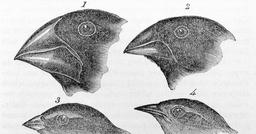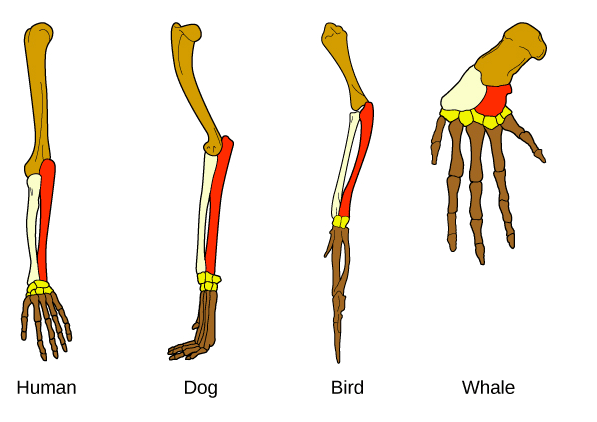
Evolution and Natural Selection Quiz
Quiz by Jennifer Pendleton
Feel free to use or edit a copy
includes Teacher and Student dashboards
Measure skillsfrom any curriculum
Tag the questions with any skills you have. Your dashboard will track each student's mastery of each skill.
- edit the questions
- save a copy for later
- start a class game
- automatically assign follow-up activities based on students’ scores
- assign as homework
- share a link with colleagues
- print as a bubble sheet
- Q1
Some organisms have features that have different functions, but similar structures. One example is the forelimb of humans, dogs, birds, and whales. What term best describes the relationship between these forelimbs?
They are embryonic
They are vestigial
They are homologous
They are analogous
60s - Q2
Which of the following would best determine whether two plant species share a recent common ancestor?
DNA sequences
The length of their stems
flowering times
Habitat distribution
60s - Q3
What best describes the hind leg bones seen in the whale?
Fossil structures from an extinct ancestor
Vestigial structures that had a function in an ancestor
Homologous structures to the wings of butterflies
Analogous structures to the fins of living fish
60s - Q4
Natural selection results in:
extinction due to successful adaption
evolution due to organisms being better adapted to their environment, tending to survive and producing more offspring
extinction due to organisms not adapting to their environment, and producing more offspring
evolution due to extinction of the fittest
60s - Q5
A structure that seems to serve no purpose in an organism is called:
dichotomous
vestigial
homologous
analogous
60s - Q6
In science, theories are:
absolute and unchangeable
the best explanation for a set of data or observations
a known fact
an educated guess
60s - Q7
Any variation that can help an organism survive in its environment is called a(n):
adaptation
competition
characteristic
vestigial structure
60s - Q8
The finches on the Galapagos island were similar in form except for variations of their beaks. Darwin observed that these variations were useful for:
attracting a mate
defending territory
gathering food
building nests
60s - Q9
Who was the naturalist that traveled the world to study plants and animals and created the Theory of Evolution by Means of Natural Selection?
Albert Wegener
Albert Einstein
Charles Darwin
Isaac Newton
60s - Q10
The white feathers of a snowy owl allow it to blend in with its environment during the winter months (snow). This is an example of ________________
Environmental Change
Species
Adaptation
Variation
60s - Q11
Which of the following is NOT an example of natural selection?
Male birds of certain species developing colorful feathers to attract female mates.
People selectively breeding hamsters.
Bacteria becoming resistant to antibiotics.
Insect populations developing resistance to certain pesticides.
60s - Q12
The cause of artificial selection is…
mutation
evolution
the environment
humans
60s - Q13
Why are advantageous traits more likely to be passed onto offspring?
Because they come from recessive alleles.
Because they are more likely to survive and reproduce.
Because the trait is an acquired phenotype.
Because they come from dominant alleles.
60s - Q14
In natural selection, the selective agent is the
mutations
humans
environment
breeders
60s - Q15
Many different groups of organisms have wings, even though they do not share a recent common ancestor. This is because they evolved in environments with similar selective pressures. Wings are an example of a(n) ______________ structure.
vestigial
homologous
dichotomous
analogous
60s
